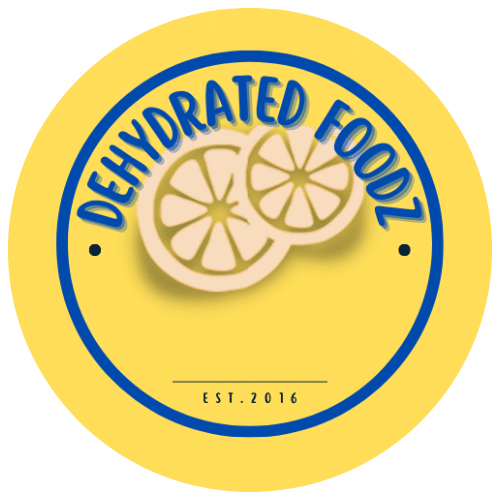Unlock the full potential of your dehydrator with The Ultimate Guide to Dehydrator Recipes! This comprehensive ebook is your go-to resource for crafting delicious, healthy, and long-lasting snacks and meals. Perfect for beginners and experienced dehydrating enthusiasts alike, this guide provides everything you need to know to boost your kitchen game.

Mastering the Art of Food Dehydrator Maintenance: An Expert Guide on How to Clean a Food Dehydrator
Food dehydrators are becoming a staple in every home. It used to be that they are only used in manufacturing plants for producing dried fruits, vegetables, and meat, but they have now made their way to the home kitchen. As people become fond of using this food-drying equipment, it becomes even more important to know more about this product and learn how to clean a
Currently, commercially-sold food dehydrators come in either stackable type or shelf type. The popular food dehydrator brands are the following─Excalibur, Koolatron, L’Equip, Nesco, and Presto. These are used for drying fruits, vegetables, and meat.
Parts of a Food Dehydrator
A food dehydrator is composed of four basic parts:
Heating element
Fan
Air vent
Food trays
The first three parts work together to remove moisture from the food. Specifically, the heating element, as the name implies, heats the food and prompts it to release moisture from within. On the other hand, the fan blows out the hot air together with the moisture that was released by the food. The air vent is where the heat and moisture come out. Without any of these three, the food will not be dehydrated properly.
The food trays, especially if they are removable trays, make cleaning much easier and prevent food from smearing on the rails.
It is important that the food dehydrator is cleaned on a regular basis if not at the end of each drying session. Here are some of the reasons why:
To avoid food contamination
During the process of dehydration, it is inevitable that some food residue is left inside the food dehydrator, particularly at the floor or bottom part. While food is being dried, some of the oil or juice drips down to the floor. There are also some food remains that stick to the screen of the trays during the process.
Sticky ingredients can make cleaning more challenging and increase the risk of contamination.
If these are not cleaned or removed, there is a big possibility that bacteria and fungi will grow from them. These could contaminate the next batch that will be dehydrated using the same screens. This could cause stomach ache, diarrhea, or worse, food poisoning.
To preserve the taste of each kind of food dehydrated
If the leftovers from the trays are not removed before processing another batch, there is a probability that the next batch of food will have a hint of the taste and odor of the previous food dehydrated using the same machine. No one would want to have dried berries with a hint of onion.
Mixed flavors and odors could also affect the taste of the dishes in which these dehydrated ingredients will be used.
To prevent food residue from build up and hardening
It is common knowledge that a stain that sits on any surface longer would be harder to remove. The same is true for food residue and stains on a food dehydrator. They are easier to remove and clean if they are still “fresh” since they are softer. However, deep cleaning is necessary to remove stubborn residues that build up over time.
To keep the food dehydrator in top shape for a long time
Food does not only get stuck on the screens and walls of the food dehydrator. They also get stuck near the heating element or near the fan of the dehydrator. When this happens, the performance of the food dehydrator is affected since there is something blocking these parts from functioning properly.
Materials Needed for Cleaning a Food Dehydrator
For the interior of the food dehydrator, these following materials are normally used to clean the walls, rails, fan, heating element, and trays: a non scratch pad, a soft cloth, mild detergent, and warm water.
Q-tips or spatula
Use Q-tips or a rag that can be attached to a spoon or spatula to help with cleaning the rails, edges, and corners of the dehydrator.
Toothbrush
For hard to remove food stains or residue, use a toothbrush especially for this purpose.
Soft sponge or non scratch pad
Use a soft sponge and warm water for cleaning the interior. For sticky residues, light scrubbing with a non-scratch pad may be necessary. It is suggested that chemicals are avoided when cleaning the dehydrator itself.
Canned air
For removing food stuck in the screen of the fan or heating element, simply remove using a spatula and use canned air to blow the debris off.
How to Clean Each Part of a Food Dehydrator
Trays, screens, and liners with warm soapy water
It is recommended that the trays, screens, and liners are washed by hand. Soaking all the trays in warm soapy water overnight can make cleaning easier. Nevertheless, there are brands that are dishwasher safe. Using non stick liners can also help with easy cleanup. However, they need to be removed from the dishwasher before the drying cycle starts. To avoid warping, place the trays on the top rack of the dishwasher.
The heating element and fan
For shelf type dehydrators or those that have the heating element and fan at the back, this should not be too much of a problem. However, for the stackable type of food dehydrators, particularly the models that have the heating element and fan at the bottom, this would be quite a challenge since most of the food residue drops to the floor because of gravity.
The simplest way to clean the heating element and fan at the bottom of the dehydrator is not to get them dirty. This can be done by having the bottommost tray empty during the dehydration process, so it can catch everything that would fall from the trays at the top.
When cleaning, use a soft cloth to remove debris from the heating element and fan. Ensure the machine is unplugged and cool before cleaning, and dry the area thoroughly before operating the machine again.
It is important that the fan and heating element are kept off food debris since only their exterior can be cleaned. It is not recommended to disassemble these parts to avoid malfunctioning.
Rails and walls
The rails and walls can easily be cleaned using the materials listed above. Q-tips, spatula, and a toothbrush could remove hard stains, while soft sponge can be used to wipe the interior with water. The canned air is used to easily blow off dried debris.
Conclusion
For some people, their food dehydrator is almost always in use. It is fine to clean them only every once in a while, but it pays to give them some wiping after every drying session. That way, the stains will not stay for a long time, making them harder to remove later on.
Food dehydrators are very useful for everyone. They help save money and are environment-friendly, as they minimize food waste. For them to last long and to provide quality, clean, and healthy dehydrated foods, it is imperative that the users also know how to clean a dehydrator properly.
FAQ
What is the best way to clean dehydrator trays?
The best way to clean dehydrator trays is by hand with warm water and a soft sponge. If you’re wondering how to clean dehydrator trays efficiently, consider soaking them overnight in a deep storage container with dish soap. Some trays are dishwasher safe, but it is recommended to remove them before the drying cycle starts.
Can I use chemicals to clean my food dehydrator ?
It is not recommended to use chemicals when cleaning a food dehydrator as they can leave residue that may contaminate the next batch of food being dehydrated. Warm water and a soft sponge are sufficient for cleaning the interior of a food dehydrator.
How often should I clean my food dehydrator ?
It is recommended to clean your food dehydrator after each drying session or at least every once in a while to prevent food residue from building up and becoming harder to remove. Keeping the drying trays clean is crucial to maintain optimal performance and prevent residue buildup. This will also help in preserving the taste of each type of food being dehydrated. Regular cleaning can also extend the lifespan of your food dehydrator.
Can I disassemble my food dehydrator to clean it?
It is not recommended to disassemble certain parts of a food dehydrator, such as the heating element and fan, as this may cause malfunctioning or damage. It is best to stick with using Q-tips, spatulas, toothbrushes, and soft sponges for cleaning. Canned air can also be used to blow off debris from hard-to-reach
Can bacteria grow in a dehydrator?
Yes, bacteria can grow in a dehydrator if it is not cleaned properly. This is why regular cleaning and proper maintenance of a food dehydrator are important to ensure the safety and quality of the dehydrated food being produced. It is also recommended to follow specific guidelines for each type of food being dehydrated to prevent harmful bacteria growth. Overall, proper cleaning and hygiene practices greatly reduce the risk of bacterial growth in a food dehydrator. So keep your dehydrator clean and enjoy delicious, nutritious, and safe dehydrated foods!
Additional Tips for Maintaining a Food Dehydrator
Always make sure to thoroughly dry the trays, screens, and liners before placing them back into the food dehydrator. Moisture can cause bacteria growth and affect the quality of the dehydrated food.
Regularly check for any signs of wear and tear in parts such as the heating element and fan. If there are any damages or malfunctions, it is best to have them repaired or replaced by a professional.
For stackable food dehydrators, rotate the trays during the drying process to ensure even dehydration and prevent hot spots.
Avoid using abrasive materials when cleaning your food dehydrator as they can scratch or damage its surfaces.
Store your food dehydrator in a dry and clean place to prevent any dust or debris from entering it.
Be mindful of the type of food being dehydrated as some foods, like meats, may leave more residue and require a thorough cleaning after use.
Regularly check your food dehydrator’s user manual for specific instructions on how to properly maintain and clean your model.
For the Excalibur dehydrator, ensure you clean the fan and heating element area regularly to prevent any buildup that could affect performance.
By following these additional tips, you can ensure that your food dehydrator stays in good condition and continues to produce high-quality dehydrated foods for years to come. Happy dehydrating!


